EVGA SuperNOVA 1000 G3 PSU Review
We already reviewed the SuperNOVA 850 G3, which left a good impression on us. Today, we're looking at the 1000 G3, this family's current flagship model. It's a physically diminutive PSU that offers high performance in every area.
Why you can trust Tom's Hardware
A Look Inside And Component Analysis
Parts Description
Before proceeding with this page, we strongly encourage you to a look at our PSUs 101 article, which provides valuable information about PSUs and their operation, allowing you to better understand the components we're about to discuss. Our main tools for disassembling PSUs are a Thermaltronics soldering and rework station, and a Hakko FR-300 desoldering gun. Finally, for the identification of tiny parts we use an Andonstar HDMI digital microscope.
| General Data | |
|---|---|
| Manufacturer (OEM) | Super Flower |
| Platform Model | Leadex II |
| Primary Side | |
| Transient Filter | 4x Y caps, 3x X caps, 2x CM chokes, 1x MOV |
| Inrush Protection | NTC Thermistor & Diode |
| Bridge Rectifier(s) | 1x Shindengen U30K80R (800V, 30A @ 97°C with heat sink) |
| APFC MOSFETs | 2x Infineon IPA50R140CP (550V, 15A @ 100°C, 0.14Ω) |
| APFC Boost Diode | 1x CREE C3D10065A (650V, 10A @ 153°C) |
| Hold-up Cap(s) | 1x Nippon Chemi-Con (400V, 820uF, 105°C, CE) |
| Main Switchers | 2x Infineon IPA50R140CP (550V, 15A @ 100°C, 0.14Ω) |
| APFC Controller | SF29603 |
| Resonant Controller | SF201T |
| Topology | Primary side: Half-Bridge & LLC Resonant Controller Secondary side: Synchronous Rectification & DC-DC converters |
| Secondary Side | |
| +12V MOSFETs | 4x Infineon IPP023N04N G (40V, 90A @ 100°C, 2.3mΩ) |
| 5V & 3.3V | DC-DC Converters: 8x Infineon BSC0906NS (30V, 40A @ 100°C, 4.5mΩ) PWM Controller: 2x On Semiconductor NCP1587A |
| Filtering Capacitors | Electrolytics: Chemi-Con (1-5000 @ 105°C, KZE), Chemi-Con (4-10,000 @ 105°C, KY), Chemi-Con (105°C, W), Chemi-Con (1000 @ 105°C, KRG), Teapo - Modular cables (1-3000 @ 105°C, SC) Polymers: Chemi-Con |
| Supervisor IC | SF201T (probably) & LM324ADG & LM339A |
| Fan Model | EVGA H1282412H (12V, 0.35A, 2170 RPM, Hydro Dynamic Bearing) |
| 5VSB Circuit | |
| Rectifier | Mospec S10C60C |
| Standby PWM Controller | 29604 |

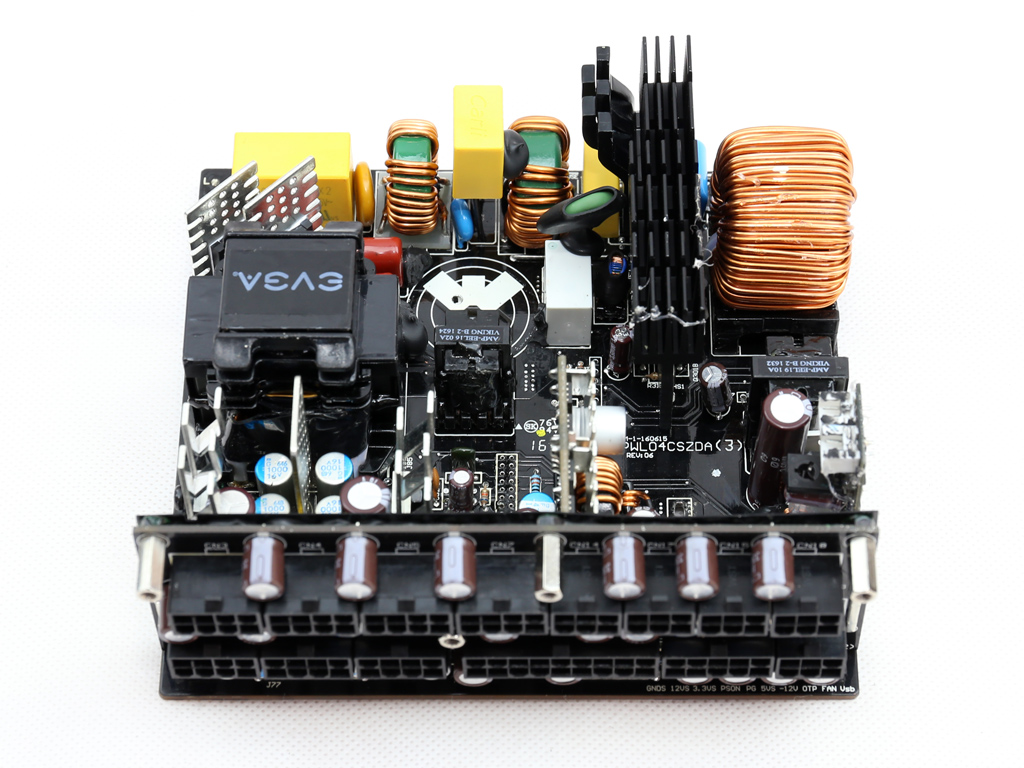
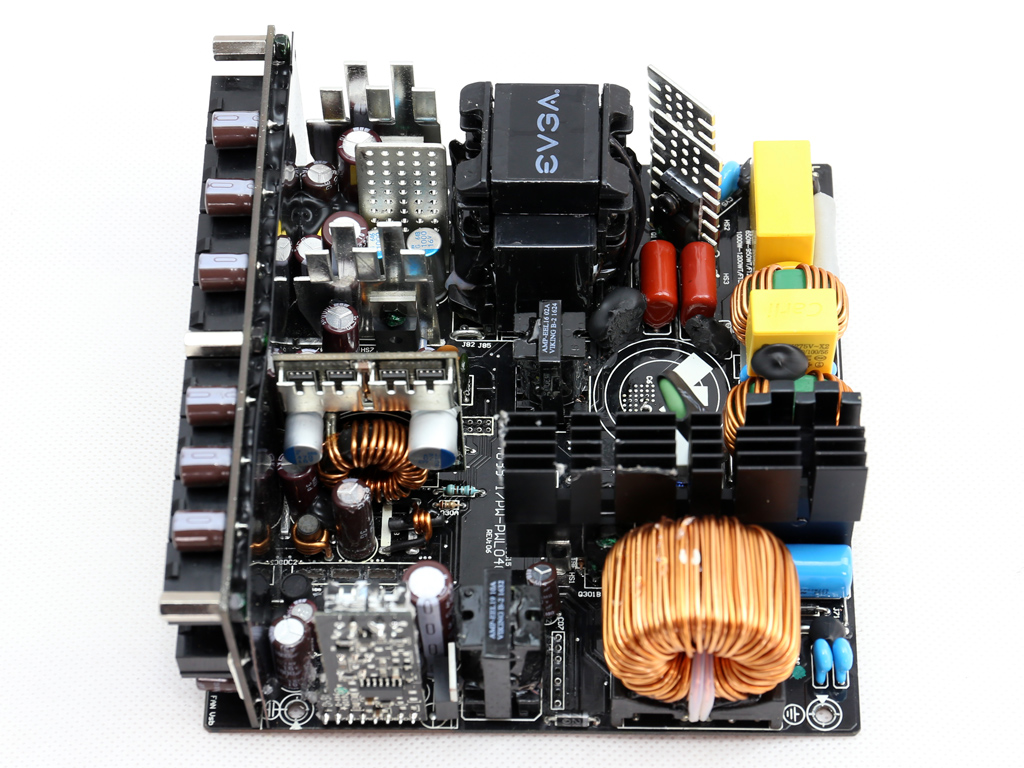
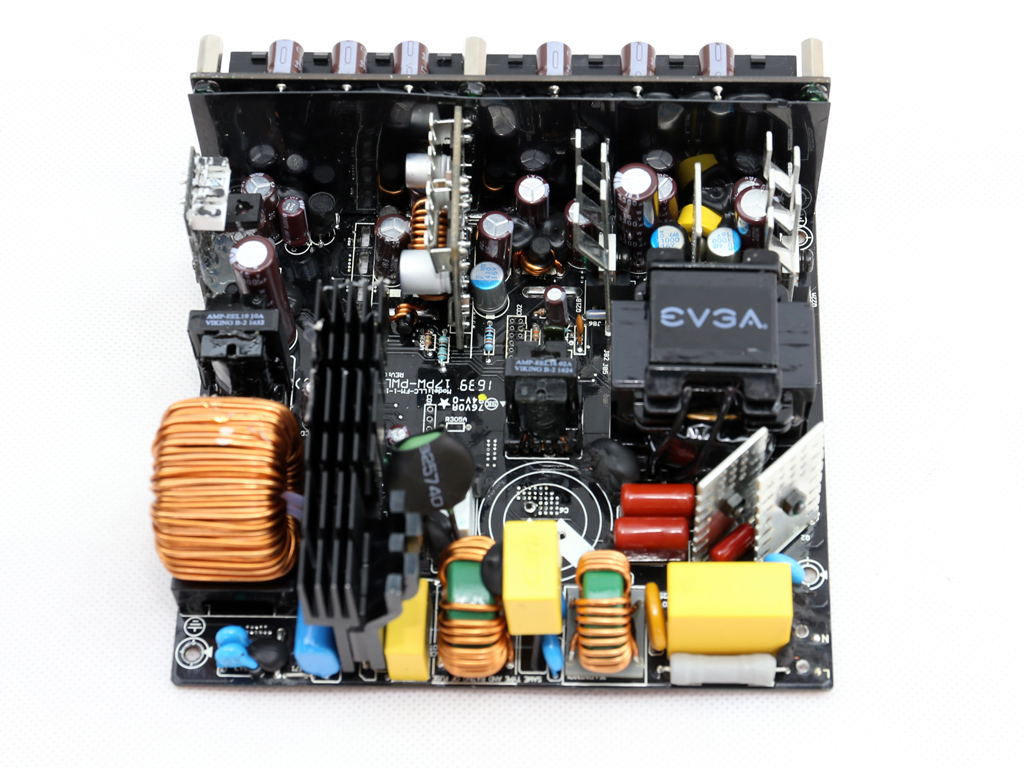

The G3s are based on a fresh Leadex II platform, which Super Flower says offers improved performance compared to the G2's Leadex design. We do see a lot of component changes, including a new resonant controller (SF201T) and a 130mm HDB fan. The primary switcher's topology is a half-bridge, just like the older platform. On the secondary side, only Japanese polymer and electrolytic caps filter the rails.
Similarities between this 1000 G3 and 1000 G2 are many, but there are enough major changes to make Super Flower's claims plausible. We'll go ahead and make the comparisons for you, illustrating how the platforms truly differ.
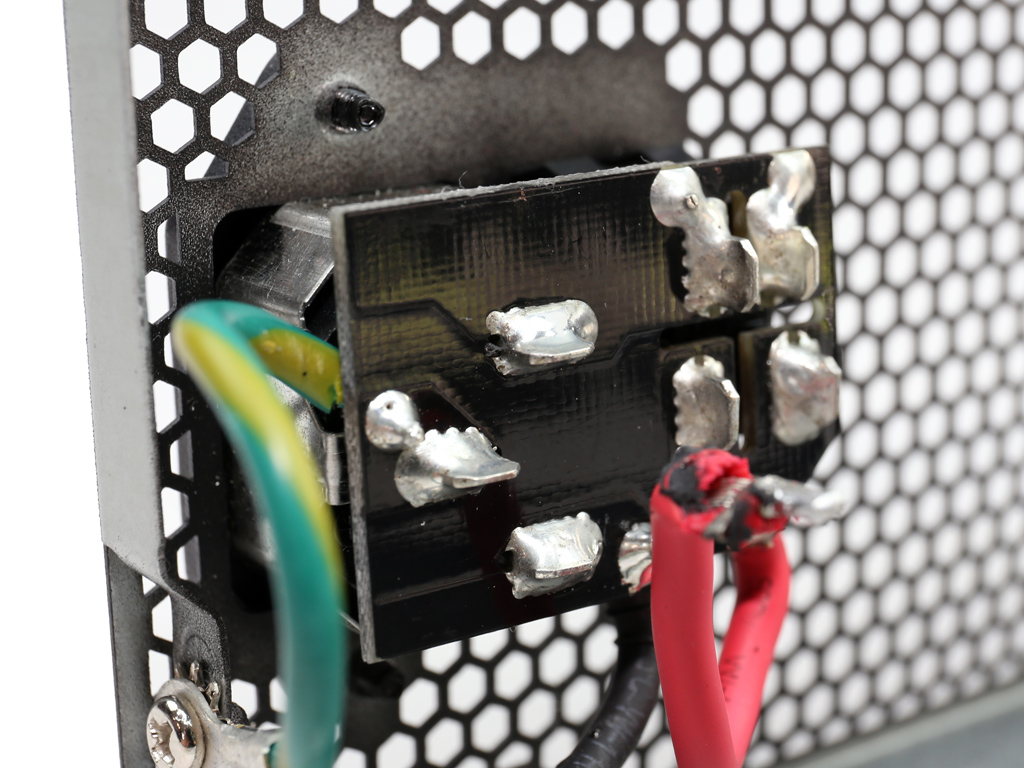

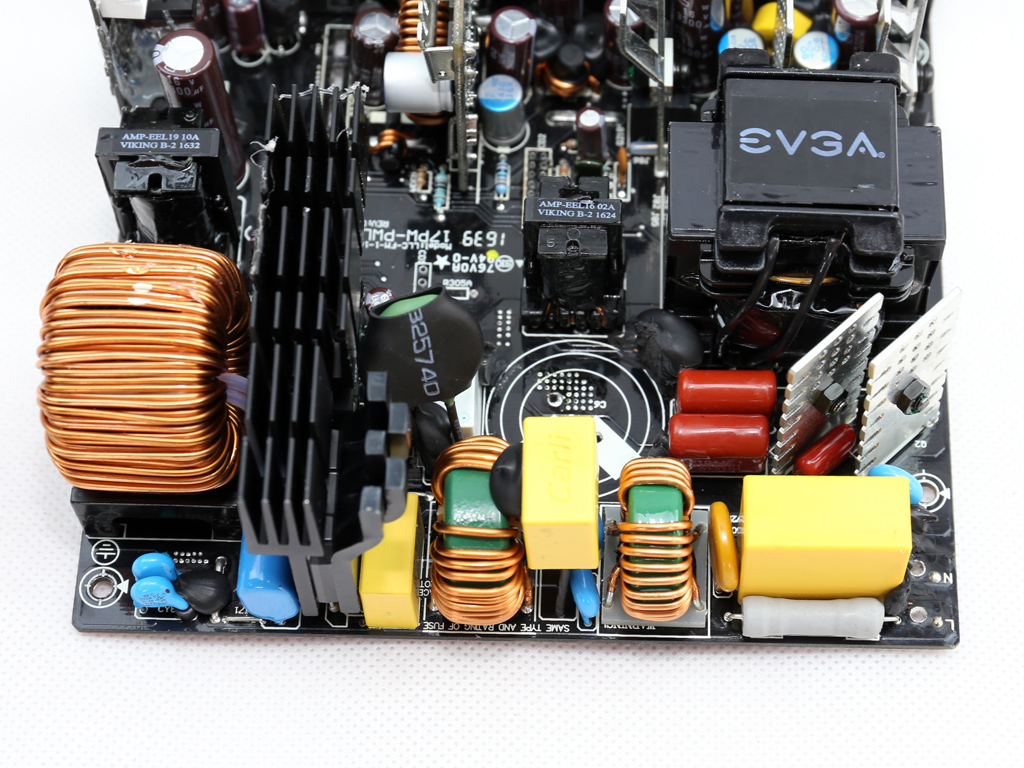


The PCB right behind the AC receptacle and power switch doesn't hold any transient filter parts. Those are all on the main PCB, consisting of three X caps, four Y ones, two CM chokes, and an MOV. There is also an NTC thermistor along with a bypass relay, which form the inrush current protection circuit. EVGA's SuperNOVA 1000 G2 uses the same components in its transient filtering stage, except it has one less X cap.


A single bridge rectifier, Shindengen's U30K80R, is cooled by the primary heat sink and a smaller dedicated one. The 1000 G2 uses a couple of bridge rectifiers, which are only cooled by the primary/APFC heat sink.



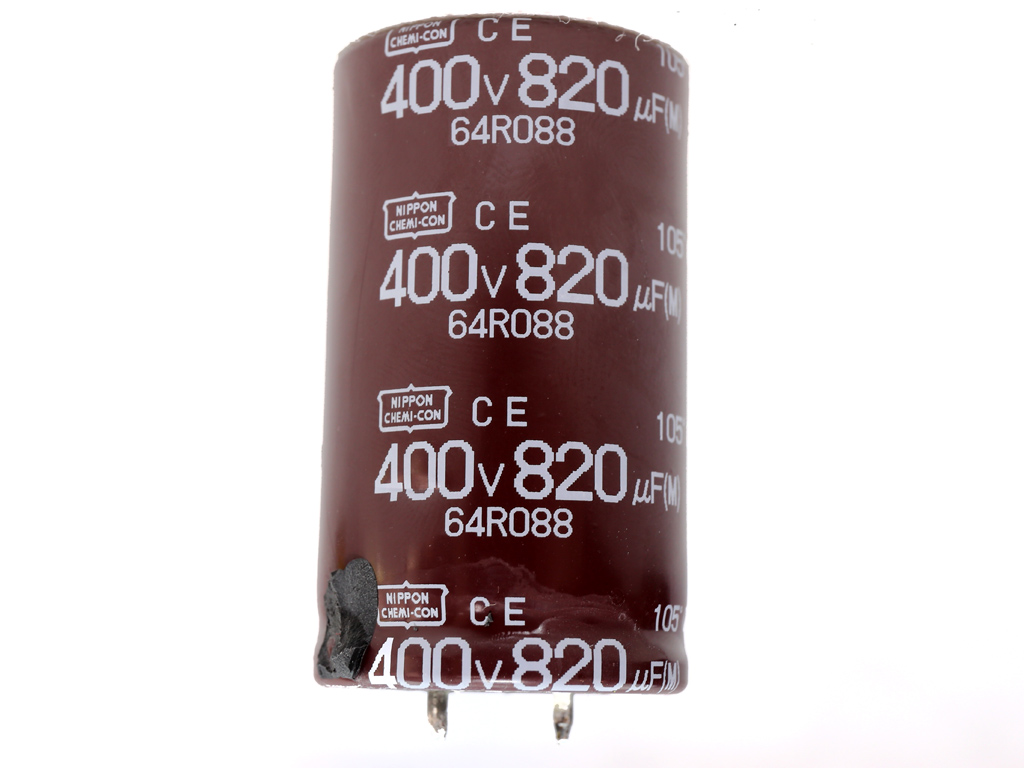
The unit's APFC converter uses two Infineon IPA50R140CP FETs and a single CREE C3D10065A boost diode. The 1000 G2 uses three Infineon IPP50R199CP FETs and a C3D10060A boost diode here. The 1000 G3's single bulk cap is provided by Chemi-Con (400V, 820uF, 2000h @ 105°C, CE) and although its capacity looks low for a 1kW PSU, it's easily able to meet this unit's demands. The 1000 G2 uses two bulk caps (Chemi-Con, 430µF each or 860µF combined, 2000h @ 105°C, KMQ) since there's more space on its PCB.


The APFC controller in the 1000 G2 is an NCP1653A IC, while in the 1000 G3 it's a proprietary IC with the model number SF29603 made exclusively for Super Flower. On the other side of the PFC board, an S9602 IC is installed.
Get Tom's Hardware's best news and in-depth reviews, straight to your inbox.


The resonant controller is a SF201T IC. EVGA uses an AA9013 IC in the SuperNOVA 1000 G2 instead. On the same board that hosts the SF201T, we also find an LM339A dual op-amp, which is probably utilized by the PSU's protection features.
In its previous-gen model, the standby PWM controller was a Fairchild BD6AG IC. This time around, the task is given to an IC with model number 29604. Unfortunately, we don't have any information about Super Flower's custom-made controllers.
The 1000 G3's primary FETs are two Infineon IPA50R140CPs; the previous model utilized two Infineon IPP50R140CPs. In both cases the topology is half-bridge, Super Flower's favorite.


Four Infineon IPP023N04N G FETs regulate the 1000 G3's +12V rail. In the 1000 G2, eight Infineon IPP041N04N G FETs are used for the same purpose. They have a much higher RDS (on) value of 4.1 mΩ compared to the IPP023N04N G's 2.3 mΩ. However, the larger number of +12V FETs in the 1000 G2 restrict the number of amps that each one has to handle, improving efficiency.




The filtering caps are provided by Chemi-Con and belong to the KZE, W, and higher-quality KY lines. They're all rated at 105°C. Besides the electrolytic caps, we also find polymer ones that are more resilient to heat since they don't use any liquid electrolyte. The 1000 G2 also uses KZE, W, and KY capacitors, along with several polymer ones sourced from Chemi-Con.



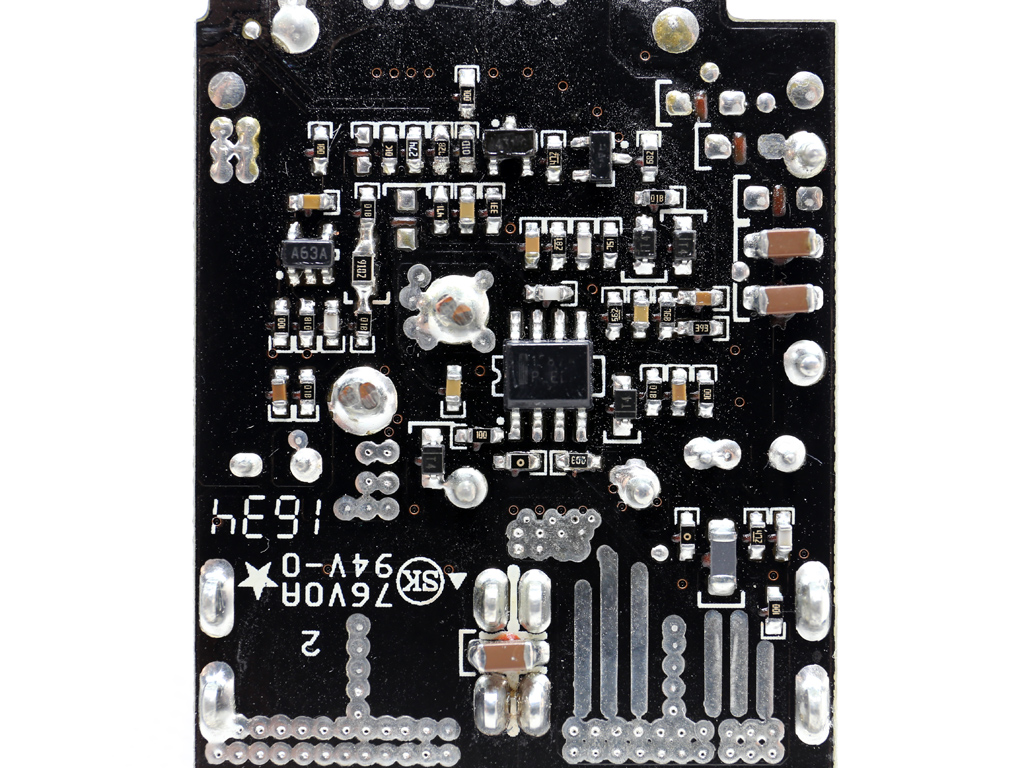



The couple of vertical boards host the regulation modules that handle the minor rails. In total, eight Infineon BSC0906NS are used by both modules, along with two PWM controllers (On Semiconductor NCP1587A). The 1000 G2 utilizes the same number of FETs in this section. In both units, Chemi-Con polymer caps, installed on the VRMs, filter the minor rails.


In both the 1000 G3 and G2, the 5VSB rail is rectified by a Mospec S10C60C SBR (Schottky Barrier Rectifier). Right next to it is the fan control board, on which we spot an LM324ADC.





On the front of the modular board, six small electrolytic caps (105°C, KRG) and nine polymer ones provide an extra layer of ripple filtering. The 1000 G2 uses 11 KRGs on the same PCB, along with nine CapXon polymer caps. So, in the newer design, Super Flower is using more polymer caps, which is a good thing since Chemi-Con's KRG caps don't have a long lifetime (only 1000 hours).




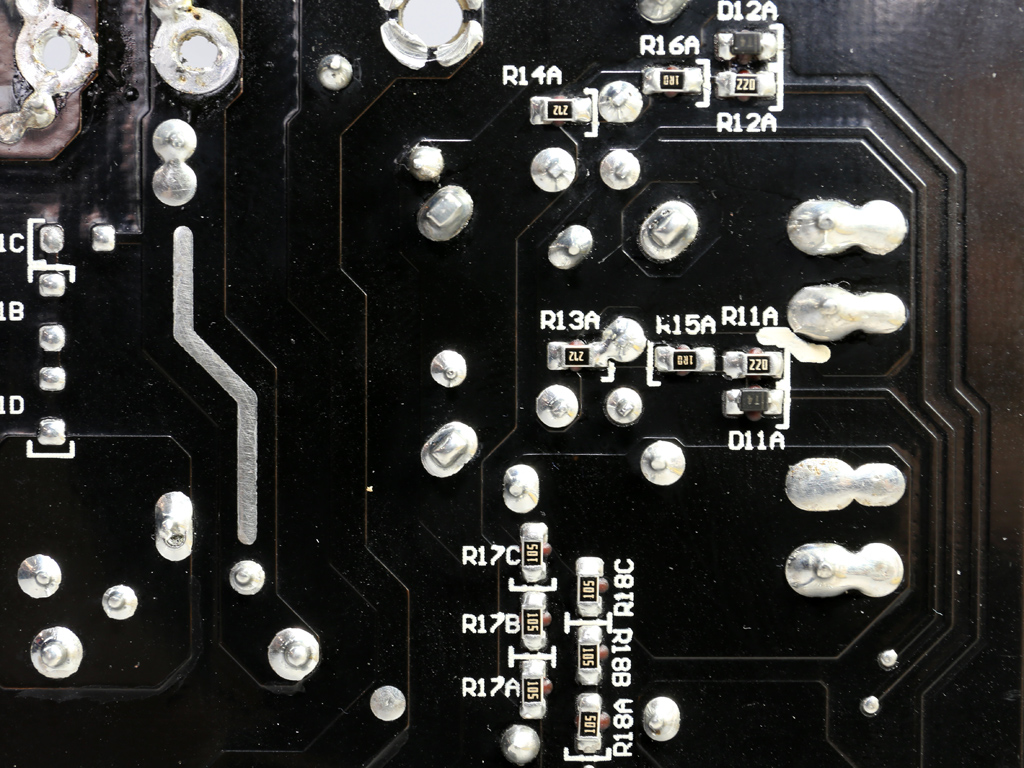
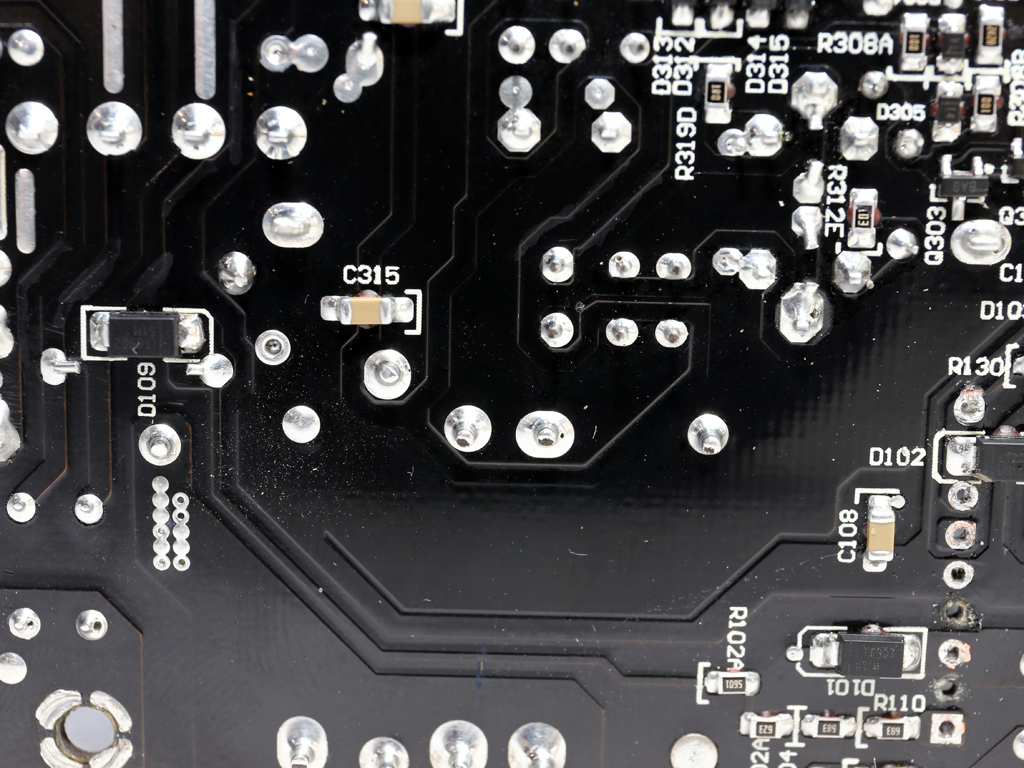
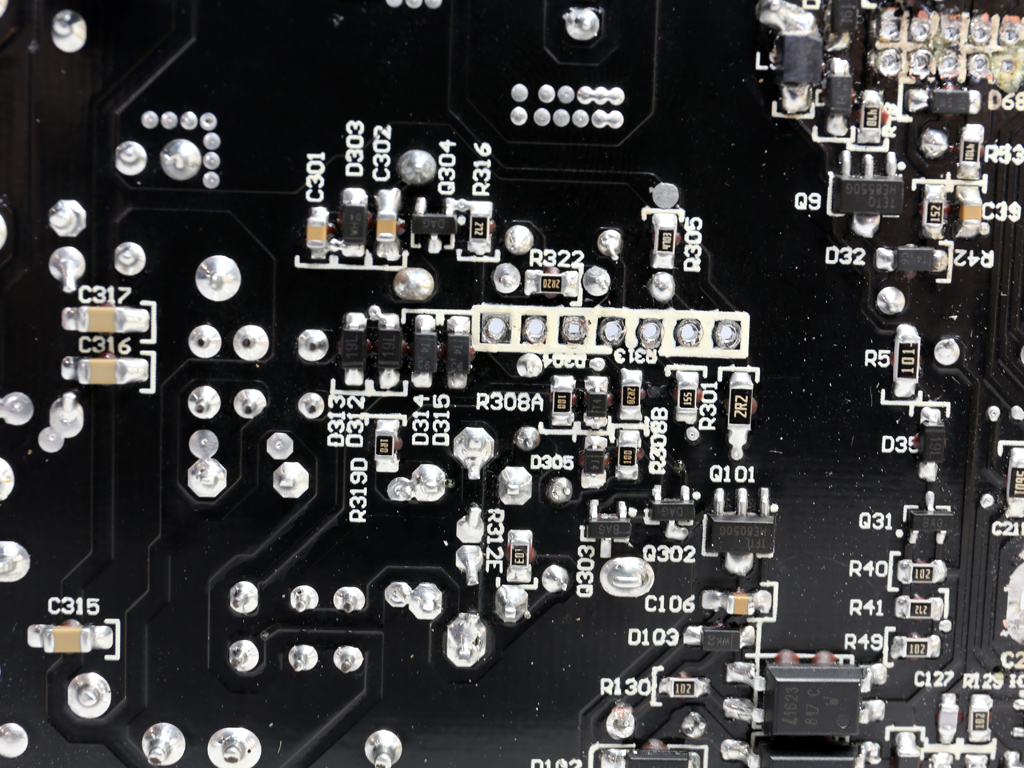
We don't have any complaints about the G3's soldering quality, and we didn't have any about the older G2 either.



There are some interesting ICs on the PCB's solder side. We spot an AX3111 step-down converter that seems to be used by the fan control circuit, along with an S9602 IC. We also find several UTC HE8550Gs and HE8050Gs, which are low-voltage, high-current small signal PNP transistors.


One of the G3's key changes is its 130mm HDB fan with a model number H1282412H. Unfortunately, the fan (12V, 0.35A, 2150 RPM) is controlled by an aggressive profile, so don't expect it to be quiet under taxing loads. Given this PSU's high efficiency, Super Flower could have used a more relaxed curve. On the bright side, the G3's profile is more granular. The G2s only had four or five different speeds, resulting in major deviations between them.
Current page: A Look Inside And Component Analysis
Prev Page Packaging, Contents, Exterior, And Cabling Next Page Load Regulation, Hold-Up Time, And Inrush Current
Aris Mpitziopoulos is a contributing editor at Tom's Hardware, covering PSUs.
-
powernod 140$. Exactly the same cost with Corsair's RMx1000 current pricing. Not sure which unit i would choose between those 2.Reply -
BugariaM Nice.Reply
>>>The 1000 G3's single bulk cap is provided by Chemi-Con (400V, 820uF, 2000h @ 105°C, CE)
Strangely, but I did not find "CE" series of capacitors in the Nippon Chemi-Con catalog -
10tacle Wow. The price point of this and overall performance makes this a serious player even for those who were in the market for nothing more than 850W gold or even platinum PSUs. So many people out there say "you don't need more than a xxxW power supply for your build." I like to buy based on <60% of calculated max load use of my build for less fan noise, heat output, and higher efficiency wall draw.Reply
Buying a gold 600W PSU when my rig uses 500W for example does not make much sense to me. I'd prefer to spend a little more and buy a gold 850W ($110USD vs. $130USD in the example of these two 650 & 850 G3 series on NewEgg right now). Not only for a higher efficiency operation as described above, but for future headroom growth. But I understand many do not think that and look to save a few dollars everywhere...one being on the PSU. -
10tacle Reply19478429 said:140$. Exactly the same cost with Corsair's RMx1000 current pricing. Not sure which unit i would choose between those 2.
Keep in mind when comparing the RM1000x that it was introduced at $180 in November 2015 and it took nearly a year to see the prices drop down below $150. The EVGA was originally released at $170 and has only been out for four months. Also keep in mind that the Corsair is marketed more for silent operation (drawback to that shown below).
If none of the drawbacks described and shown here do not bother you, and if overall "hot" efficiency and exhaust temperature are among top priorities for you, then the EVGA is the better performer. Average efficiency result of 7 load line tests, and the average exhaust temps under each test:
EVGA - 88.571%, 45.0C
Corsair - 87.857%, 49.8C
^^While the <1% efficiency difference is nominal and will not be seen on your monthly power bill, that nearly 5C difference coming out can make a slight difference in the temperature of your room in the summer. So the Corsair being quieter has a drawback.
http://www.jonnyguru.com/modules.php?name=NDReviews&op=Story4&reid=494 (EVGA)
http://www.jonnyguru.com/modules.php?name=NDReviews&op=Story4&reid=449 (Corsair)
-
Co BIY I would have liked to see the EVGA 1000 G2 in the performance tables as well. Both to see the generational improvement and to make a value comparison while both units are on the market.Reply
Is EVGA stopping production of the G2 series ? -
hst101rox 10TACLE, if the efficiency of the EVGA and the Corsair are nearly identical, the ~5 degree C temp difference could be just from the amount of airflow being less in the Corsair. Power consumption is the only thing that equates to BTUs, heat.Reply -
10tacle Reply19479497 said:10TACLE, if the efficiency of the EVGA and the Corsair are nearly identical, the ~5 degree C temp difference could be just from the amount of airflow being less in the Corsair. Power consumption is the only thing that equates to BTUs, heat.
That's why I stated the downside to the Corsair is the hotter air coming out the back. Same thing with a video card: you have to sacrifice more heat output for a quieter fan speed.
-
Aris_Mp I don't have 115V test results (but only 230V) for the G2s, so I couldn't add them to the graphs.Reply -
Co BIY "We didn't get any OCP results because our unit died during the OPP test, meaning either that this particular sample had a problem or OPP is set very high."Reply
Seems like this would be a big deal ?
Maybe at least one bullet in the Con column. -
Aris_Mp I have another one here, which come late, to test. If it dies as well then I will update the con list.Reply

